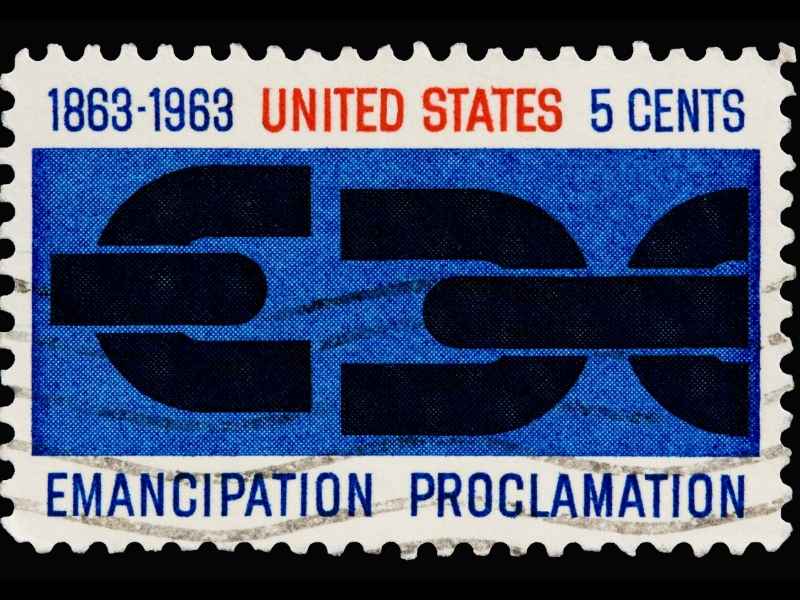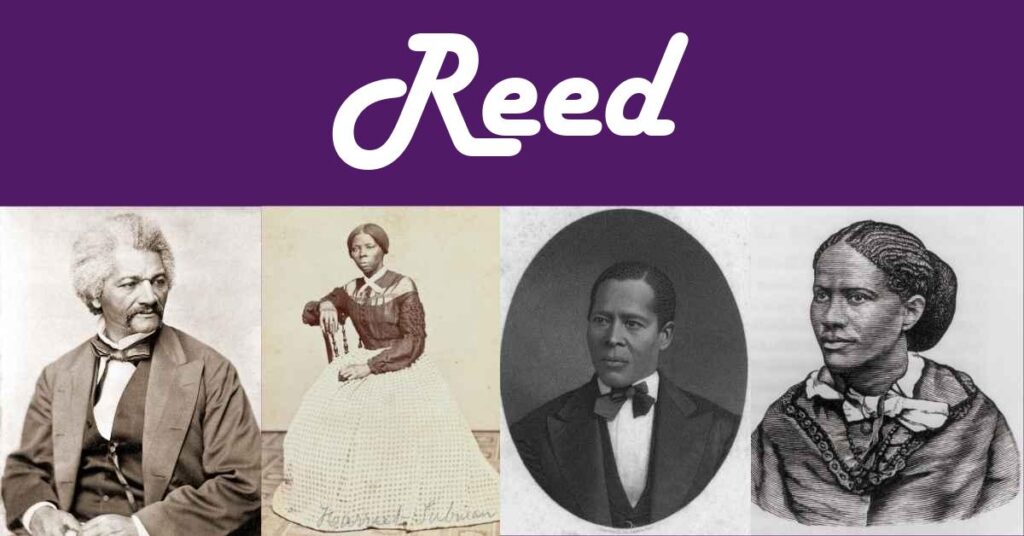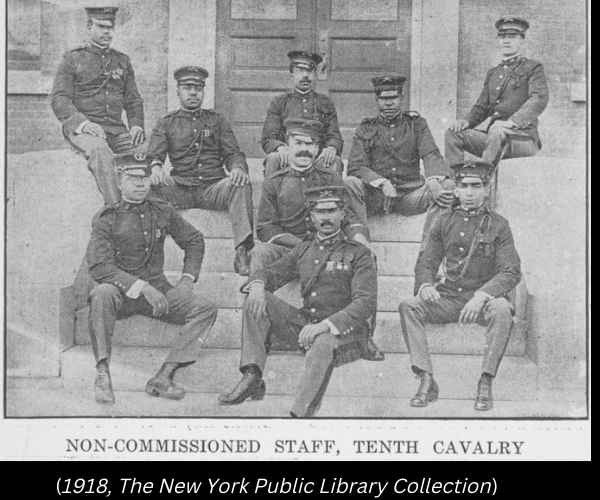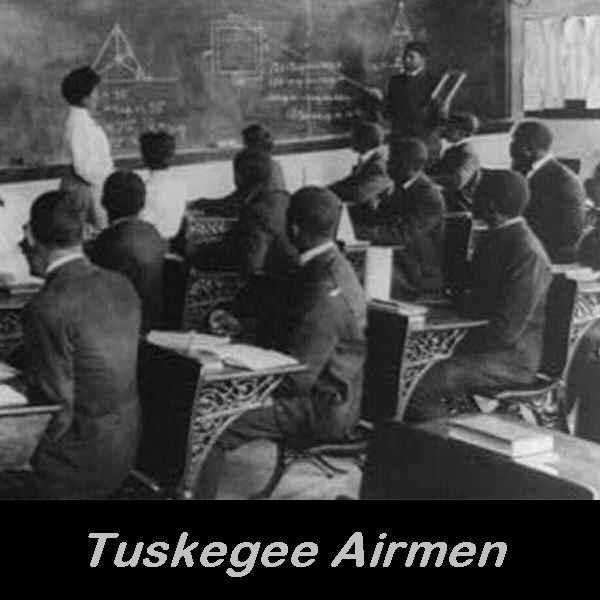The 2010 U.S. Census recorded 62,691 black Americans with Reed as their last name. That represented 23% of the total of 277,030 entries.
This article tracks their numbers in the census since the Civil War. We also look at historic African American people named Reed.
We end with a review of early records of black military service in the United States.
After The Civil War

The 1870 census was the first survey after the Civil War and the Emancipation Proclamation. In 1850 and 1860, only free African Americans were recorded in the census. The many enslaved were omitted.
From 1870 onwards, all black Americans were included.
6,822 people named Reed were recorded in the 1870 census as black and 1,298 as mixed.
There was a total of 62,504 people with the name.
Reed In The 1900 And 1940 Census
The mixed category was dropped from the census in 1900, so we just need to look at the black numbers this time.
The 1900 census recorded 17,624 people with the last name Reed as black within a total of 102,805 that year.
By the way, the mixed category returned in the 1910 and 1920 censuses. It was dropped again in 1930, but replaced with extra categories for colored and non-white in a way that seems confusing now.
This changed again in 1940 and we can simply focus on one black category.
The 1940 census recorded 26,970 people named Reed as black within a total of 155,549.
Historic Black Figures With The Reed Surname

Here are some notable African Americans in history with Reed as their last name.
Philip Reed
- Born: About 1820
- From: South Carolina
- Died: 1892
Philip Reed was born into slavery and sold as a teenager to a sculptor in Charleston named Clark Mills. Reed learned sculpting and metalwork while assisting Mills in his work.
Mills built renowned statues to Presidents Andrew Jackson and George Washington between 1848 and 1860. Reed likely assisted in the metal work and running the furnaces.
In 1860, Mills cast the Statue of Freedom that tops the dome of the U.S. Capitol. Payroll documents show that Philip Reed worked in Mills’ foundry to cast the nineteen foot bronze statue.
Reed gained his freedom when he was 42 and worked as a plasterer in Washington D.C.
Over forty years later, Meta Vaux Warrick Fuller became an influential sculptor who exhibited in Paris and in the U.S.
Judy Reed
- Born: 1826
- From: Charlottesville, Virginia
- Died: 1905
Judy Reed worked as a seamstress in Charlottesville. Her husband was a gardener.
The family is in the 1870 census where both are recorded as not being able to read or write. Up until Emancipation in 1863, it was illegal for enslaved African Americans in Virginia to be able to do so.
Yet, Judy Reed is the first known African American woman to secure a U.S. patent, which she received in 1885. Her invention was for an improvement to the design of dough kneaders and rollers. Reed’s patent allowed the dough to mix more evenly.
Other Inventors
Here are some other early black female inventors:
Willie Reed
- Born: 1937
- From: Mississippi
- Died: 2013
Willie Reed was an eighteen-year old sharecropper when he bravely testified at the trial of the murder of Emmett Till. He put his life at risk when he agreed to appear as a witness.
Reed recounted in court that he was walking to a store in 1955 when he saw a Chevy truck with the fourteen-year-old Emmett and several white men. He later spotted the truck at a barn and heard the sounds of a beating. He pointed at one of the defendants and identified him as being present.
To protect his own safety, Reed changed his name after the trial. He moved to Chicago where he worked as a hospital orderly and raised a family.
Reed In Black Military Records

Military records are a rich resource of for family history research. Here are examples of the Reed surname from three different military services:
- Buffalo soldiers
- Black civil war sailors
- Tuskegee airmen
Buffalo Soldiers
Five regiments for black soldiers were formed during the Civil War. They were known as the Buffalo Soldiers.
Their records are part of the national archive of military monthly returns. The information includes the year and place of birth, where they enlisted, their occupation, and their height.
One of the earliest military entries for Reed was in April 1867. James T. Reed was a Private in the Tenth Cavalry. He was stationed in April 1867 at Fort Leavenworth, Kansas.
One of the later entries was in July 1914. Chester A. Reed was a Corporal in the Tenth Cavalry.
If you are researching military ancestors, there is a free index of these records on Ancestry.com and FamilySearch.org.
You have to create an account on either website, but you do not need to pay for the Buffalo Soldiers archive.
Black Civil War Sailors
The National Parks Service has a free archive of African American sailors during the Civil War.
The information includes their age, height, rank, occupation, and where and when they enlisted. It also includes every ship that they served on.
You can search the database on the National Parks website.
Gabriel Reed
One of the earliest entries for Reed was for Gabriel Reed from Georgetown, North Carolina. He enlisted in July 1862 at Port Royal when he was aged 32.
The record shows that Gabriel was assigned on July 1864 to the ship Patapsco.
His occupation before enlisting was as a Laborer. His naval rank was Contraband.
Contraband was a term for black sailors who fled from slavery under the Confederacy.
Albert Reed
One of the later entries was for a sailor who enlisted at Philadelphia in August 1863. Albert was aged 29 and was from Norfolk, Virginia.
He was assigned to the ship Kansas on March 1865.
His occupation before enlisting was as a Bricklayer. His naval rank was Landsman.
“Landsman” was the lowest rank at the time and was given to recruits with little sea experience.
Tuskegee Airmen

The Tuskegee Airmen were military personnel who served at the Tuskegee Army Airfield or related programs.
Nearly one thousand black pilots graduated from the Tuskegee Institute. They flew single-engine fighter planes or twin-engine bombers. 352 fought in combat.
Marsille Reed graduated from the Tuskegee Institute in March 1945. He qualified as a fighter pilot. Marsille was from Tillar, Arizona.